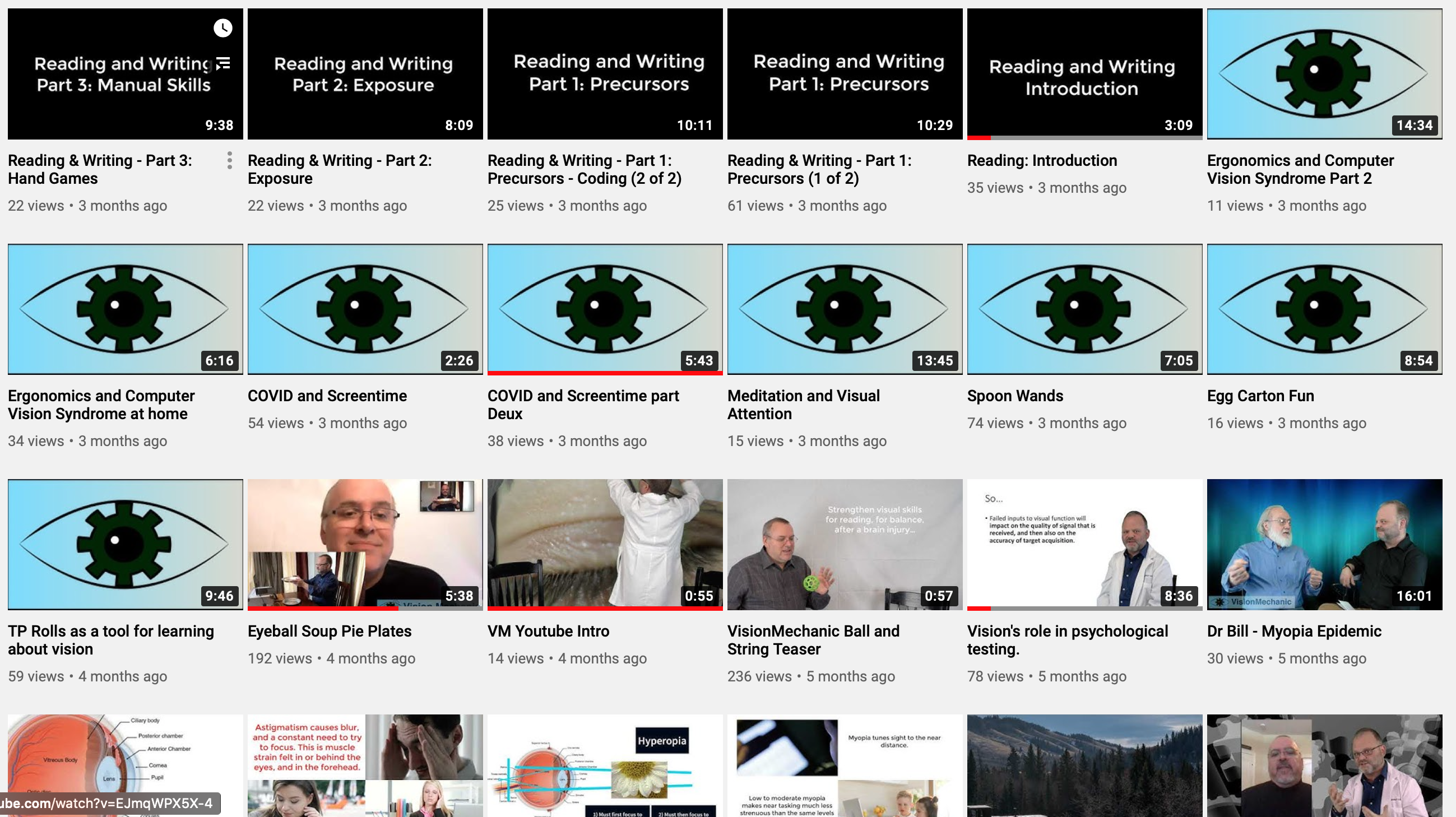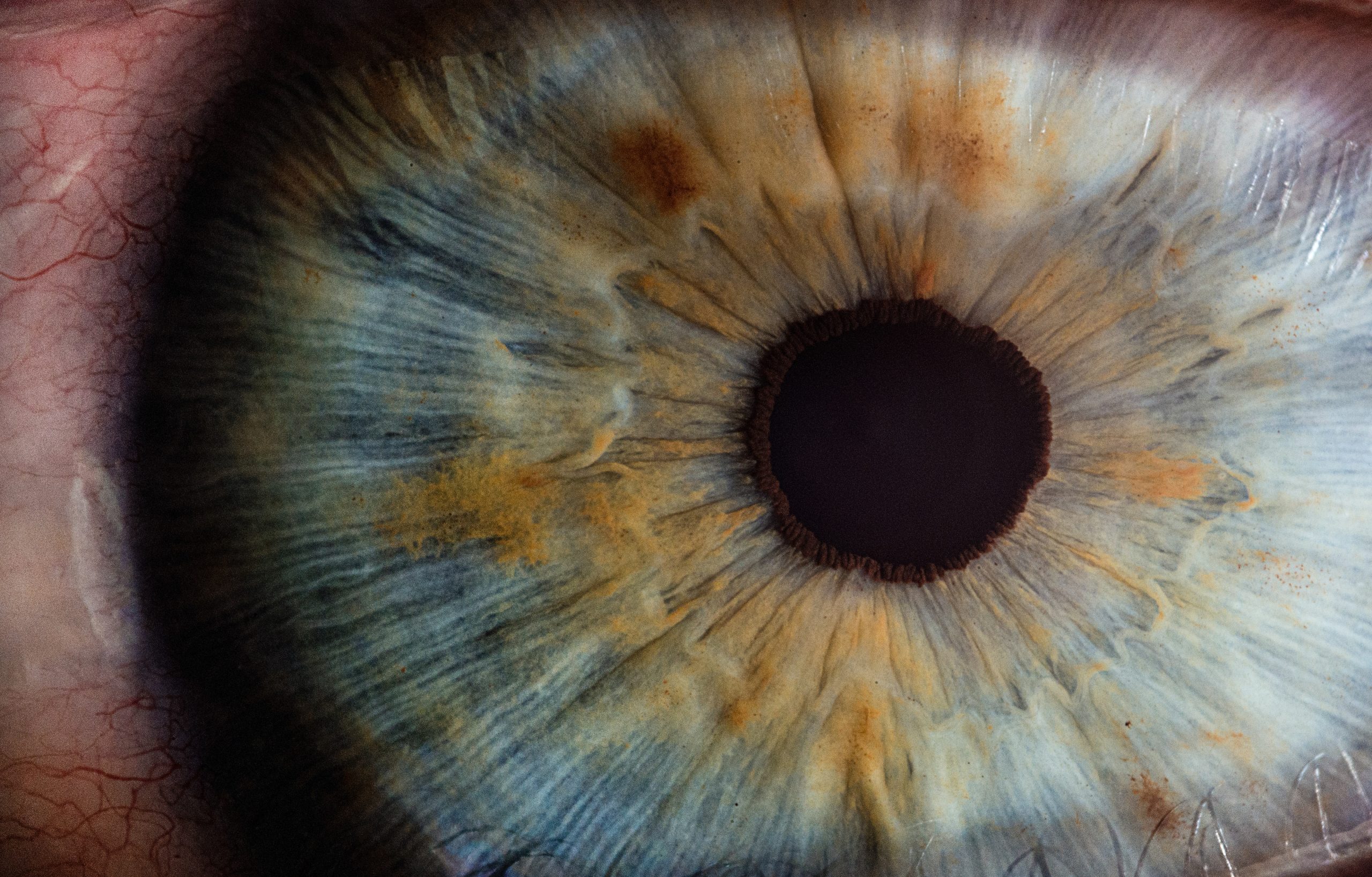 Subscribe to Vision Mechanic on YouTube.com
Subscribe to Vision Mechanic on YouTube.com
(The goal of VisionMechanic.net is to provide science-based clinically relevant resources about humans, for humans. All humans. This series highlighting International Vision and Learning Month (August) is more focused on those humans who are in formal learning programs, most notably, younger humans. If you yourself are a learner, or if you teach them, guide them, care for them or provide therapy for them, then this series will be of interest to you.)
Vision is best understood as a complex process of calculations in the brain from different inputs (including but not limited to the many inputs from the eyes) and outputs (including coordination of my fingers while they type, for example). All these ins and outs feed back into another complicated loop that moves the eyes to find the next target of interest – like planning the multiple movements of the eyes made each second while reading. Some great books have been written on the topics of the eyes and the broader visual system and how it integrates with just about everything our bodies do. (See Adler’s Physiology of the Eye, or Principles of Neural Science, or Visual Perception: A Clinical Orientation for starters.)
Regardless of where you go in your understanding of vision, it must start with the eye. This video summarizes some basic elements of the human eye in no great detail. It does highlight some of the elements which are particularly important to how vision affects learning and behaviour:
The eye is similar to a camera in the sense that it focuses light on a sensor. In the case of the eye, the sensor is a multilayered light sensitive neural network called the retina. The eye uses elements at the front of the eye (cornea and lens) to focus light on the receptor cell layer of the retina, and then begins the process of refining the image before sending it to the brain through the optic nerves. The brain does most of the work from there, and that work includes:
- Identifying what the target is,
- Identifying where the target is, and where it’s going,
- Extracting meaning from the target,
- Planning motor movements to deal with the target.
The eye is like the camera also in that it is the photographer that drives the process. Eyes point to where we want them to look, not the other way around. Directing the eyes and focusing the image requires fine calculations involving nearly 40 nerves and muscles, all precisely coordinated to locate, target, and then fixate on that next item of interest. Sometimes motor movements of the eyes (directing of gaze to a target of interest) is a voluntary thing, as in when we’re reading, and these types of movements are learned and therefore trainable – the fine movements required for reading is a good example of this. Other movements are reflexive, like when something appears in our peripheral vision and we turn our heads to look.
The eye is like the camera also in that it is the photographer that drives the process. Eyes point to where we want them to look, not the other way around. Directing the eyes and focusing the image requires fine calculations involving nearly 40 nerves and muscles, all precisely coordinated to locate and target that next item of interest.
There are many things that can go wrong with vision given it’s so complex with so many inputs and outputs – nearly 80% of the brain is somehow connected to the eyes and visual nerve pathways. The eyes themselves are one major source of possible trouble in learning and development and these problems are relatively common. These eye conditions cause problems in focusing the image equally and clearly across both retinas. It is not merely that poor focus that interferes with perception, but the strain of trying to do so can become an annoying and at times painful or even blinding task. The effect of this is that it all leads to common concerns like reports of learning, behaviour, and attention problems.
Why do eyes have trouble focusing? Part of the problem comes from the size of the eyes (which leads to focusing problems), the shape of the eyes (which can lead to strange optical anomalies like astigmatism). At times there is a problem with simple alignment of the eyes, or the focusing mechanism is not working fully. When focusing an image is a concern, we must also be concerned about mental focus. Likewise, what happens behind the eyes (mental focus / attention) can often enough interfere with adequate directing of gaze (targeting) and focusing of the image and this can lead to the appearance of reading disorders, for example. Other posts will follow up on this.
The eyes themselves are one major source of possible trouble in learning and development and these problems are relatively common and lead to common concerns like reports of learning, behaviour, and attention problems.
The eye, unlike the camera, has a lot of variability between individuals. If I buy a Sony A7Riv (a pretty decent camera by today’s standards) it will work the same for me as for everyone else with the same lens in place. Human vision and eyes are not like this and what complicates things is that we assume we are like cameras – in this way we suffer from vision blindness: We naturally assume that other peoples’ eyes are the same as our own. This is a common disaster when it comes to children – we cannot see what they see, or feel how it feels for them to try to see clearly. Well-meaning family doctors under the influence of the Dunning-Kruger Effect will often mistakenly pronounce vision is fine since the eyes are fine and sight is fine, and take no further measures to prove the point, and this conclusion is propagated down through teachers, parents, psychologists who will all agree that vision is not an issue for that child.
We naturally assume that other peoples’ eyes are the same as our own. This is a common disaster when it comes to children – we cannot see what they see, or feel how it feels for them to try to see clearly.
Eyes are not cameras and virtually nobody has the same eyes and anyone else. In fact, it is very rare for any one person’s two eyes to be exactly the same. It’s important to understand eyes to understand vision and vision is much broader than the simple notion of ‘sight’, but it’s a good starting point in understanding what our vision is all about.
Next posts will start to look at what glasses prescriptions are and how the shape of the eyeball determines how much work we have to do to see something, anything, clearly.
Expand your understanding:
- Get a head start by having a look at other posts here at visionmechanic.net, or on the Vision Mechanic YouTube channel.
- Learn more in a more formal way, consider taking one of the growing number of professional credit VisionMechanic.net courses for developmental professionals (teachers, doctors, therapists, psychologists).
- Join the Vision Rehabilitation Group on FaceBook.







2 Responses
very useful.